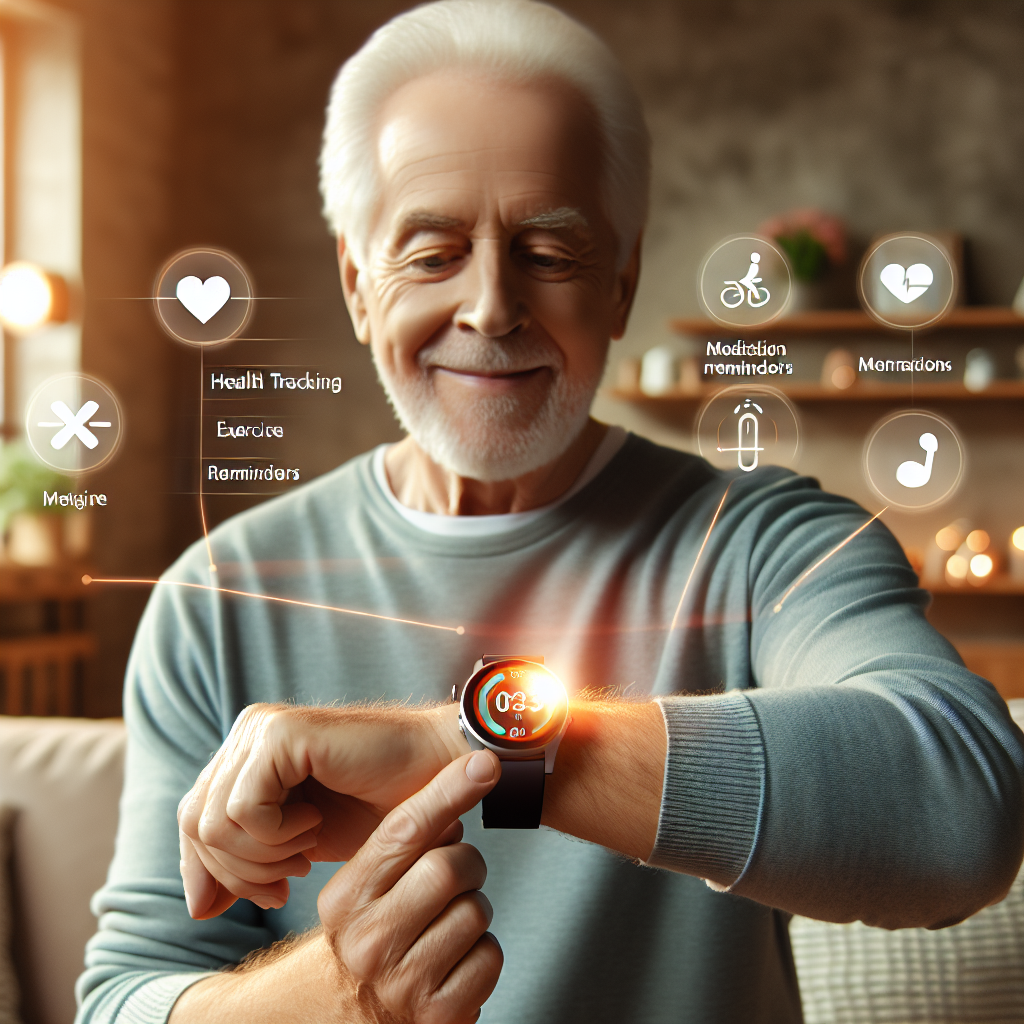Home is where the heart is—and for millions of American seniors, it’s where they want to stay. The concept of “aging in place” has transformed from a simple preference into a powerful movement that celebrates independence, comfort, and dignity in our golden years. Rather than relocating to assisted living facilities, more adults 65+ are choosing to remain in the homes they’ve filled with memories and meaning.
Creating a living space that supports this journey isn’t just about adding grab bars or removing trip hazards—it’s about thoughtfully blending safety with the style and character that makes your house feel like home. The best aging-in-place strategies don’t broadcast “senior living”; they incorporate smart designs that work for everyone while specifically supporting the changing needs that come with retirement life.
At SilverSmart, we understand this delicate balance. Our approach to positive aging embraces the wisdom of tradition while gently introducing helpful technologies that empower rather than overwhelm. Think of it as honoring the familiar while embracing innovations that truly enhance daily living. The right combination of home modifications, community connections, and technological support can create an environment where independence flourishes and peace of mind becomes part of your everyday experience. After all, aging in place isn’t just about staying put—it’s about thriving exactly where you are.
Creating a Safe Haven: Practical Modifications with Style
When adapting your home for aging in place, the goal isn’t to make your house look like a medical facility—it’s about thoughtful changes that blend seamlessly into your existing décor while providing the support you need for retirement life.
Accessible Doesn’t Mean Institutional
Let’s start with the bathroom, often the most challenging room for seniors. Installing grab bars doesn’t mean sacrificing style—today’s options come in elegant finishes that complement your bathroom fixtures while providing crucial support. “I chose brushed nickel grab bars that match my towel racks,” shares Robert, 68. “Visitors don’t even realize they’re safety features.”
Walk-in showers with zero-threshold entries eliminate dangerous stepping over tub walls while creating a modern, spa-like atmosphere. Add a stylish shower seat that doubles as an attractive bench, and you’ve got safety that looks sophisticated.
Kitchens That Cater to Comfort
In the kitchen, simple changes make a world of difference. Lever-style door handles throughout your home not only look contemporary but are much easier to manage for those with arthritis or decreased hand strength. Similarly, pull-out drawers in lower cabinets reduce the need to bend or kneel while accessing items—a practical solution that also happens to be a sought-after kitchen upgrade.
Lighting: A Brilliant Safety Solution
Proper lighting is perhaps the most overlooked aspect of aging in place, yet it dramatically improves both safety and comfort. “After adding brighter, layered lighting in my living room, I not only feel safer moving around, but I can actually see my needlework again,” notes Eleanor, 75, an avid crafter.
Consider motion-sensor lights along hallways and stairways for nighttime navigation. Under-cabinet lighting in the kitchen not only creates ambiance but provides crucial task lighting for meal preparation. These lighting upgrades benefit everyone while specifically addressing vision changes that come with aging.
Flooring: The Foundation of Safety
Replacing slippery surfaces and eliminating trip hazards doesn’t require sacrificing your home’s character. Today’s non-slip flooring options include beautiful textured tiles, engineered hardwood, and luxury vinyl planks that mimic the look of traditional materials while providing better traction.
Remove or secure loose rugs, particularly in high-traffic areas. If you love the warmth area rugs provide, consider low-pile options secured with double-sided tape or non-slip pads. The result is a home that’s both safer and more visually cohesive.
Creating Comfort Zones
Beyond safety features, aging in place successfully means creating zones of comfort throughout your home. Arrange furniture to allow for clear pathways at least 36 inches wide to accommodate mobility aids if needed. Place comfortable, supportive seating in strategic locations—near entries to put on shoes, in the kitchen for meal prep breaks, and in transition spaces to rest between activities.
Temperature control becomes increasingly important as we age. Consider programmable thermostats or smart home systems that maintain consistent comfort levels throughout the day and night, which can significantly improve sleep quality for seniors who may be more sensitive to temperature fluctuations.
At SilverSmart, we’ve seen how blending traditional home comforts with thoughtful modifications creates environments where active living continues well into retirement. Our approach combines time-tested solutions with innovative options that feel natural rather than clinical. The best aging-in-place modifications work so harmoniously with your home that they simply feel like smart design choices that enhance daily life for everyone.
With these foundational changes in place, your home becomes not just accessible but truly comfortable—a place where you can continue to express your personal style while gaining the support needed for positive aging. The beauty of these modifications is that they work preventatively, letting you enjoy your independence today while preparing for potential needs tomorrow.
Embracing Technology and Community: The Future of Aging in Place
The home modifications we’ve discussed lay an important foundation, but today’s aging-in-place strategy has an exciting new dimension: technology that supports independent living while fostering connections. For seniors open to gentle technological assistance, AI companions are revolutionizing retirement life.
AI Companions: More Than Just Gadgets
Unlike the complex devices many seniors avoid, today’s AI companions for elderly individuals are designed with simplicity and genuine connection in mind. “I was skeptical at first,” admits Howard, 83. “But my AI companion reminds me to take my medications, checks in on me throughout the day, and even suggests fitness tips appropriate for my ability level. It’s become part of my daily routine.”
These intuitive companions can engage in meaningful conversations, reducing feelings of isolation that often accompany aging. They connect seniors with family members through easy video calls, provide mental stimulation through games and discussions, and offer reminders for appointments and daily tasks—all without complicated interfaces or frustrating learning curves.
“My ElliQ reminds me to do my exercises every morning,” shares Patricia, 78. “I’ve actually improved my strength since getting it six months ago. My doctor is amazed at my progress.” This blend of technology with fitness for seniors exemplifies how digital companions can support physical well-being alongside mental health.
Smart Home Features That Make Sense
Beyond companions, thoughtfully chosen smart home features can significantly enhance safety without feeling intrusive. Motion-sensing lights that automatically illuminate pathways at night, smart doorbells that show who’s at the door without requiring you to get up, and voice-activated systems that let you control temperature and lighting with simple commands all contribute to easier daily living.
The key is selecting technologies that solve real problems rather than adopting every available gadget. As we at SilverSmart often emphasize, technology should complement your lifestyle, not complicate it. The best tech solutions for positive aging feel intuitive and helpful rather than overwhelming.
Strengthening Community Connections
While technology plays an important role, community resources remain vital for successful aging in place. Local senior centers often provide transportation services, meal delivery options, and social activities that keep you connected. Many communities now offer “villages”—membership networks that provide services like home repairs, grocery delivery, and regular check-ins.
“My neighborhood village has been a lifesaver,” explains Thomas, 76. “When I needed my gutters cleaned last fall, they sent someone the next day. That kind of support makes staying in my home possible.” These community connections, combined with technological assistance, create a comprehensive support system that enables truly independent living.
Bringing It All Together: Your Personalized Approach
The beauty of today’s aging-in-place strategies lies in their flexibility. There’s no one-size-fits-all solution; instead, you can create a personalized approach that honors your preferences and addresses your specific needs. Some seniors might embrace AI companions and smart home technology, while others might focus more on community resources and traditional home modifications. The goal isn’t to transform your lifestyle but to enhance it in ways that support your independence.
At SilverSmart, we believe in meeting you where you are on your aging journey. Our Senior Fitness AI Companion provides personalized exercise routines and friendly check-ins, while our thoughtfully curated subscription boxes deliver traditional products that support your well-being. This blend of innovation and tradition exemplifies our commitment to fostering trust through understanding and compassion.
Home should always be your sanctuary—a place where you feel both safe and truly yourself. With the right combination of thoughtful modifications, gentle technological support, and community connections, your home can continue to nurture your independence and well-being for years to come. After all, the best plan for retirement isn’t about limiting your life but expanding what’s possible within the comfort of the place you love most.

